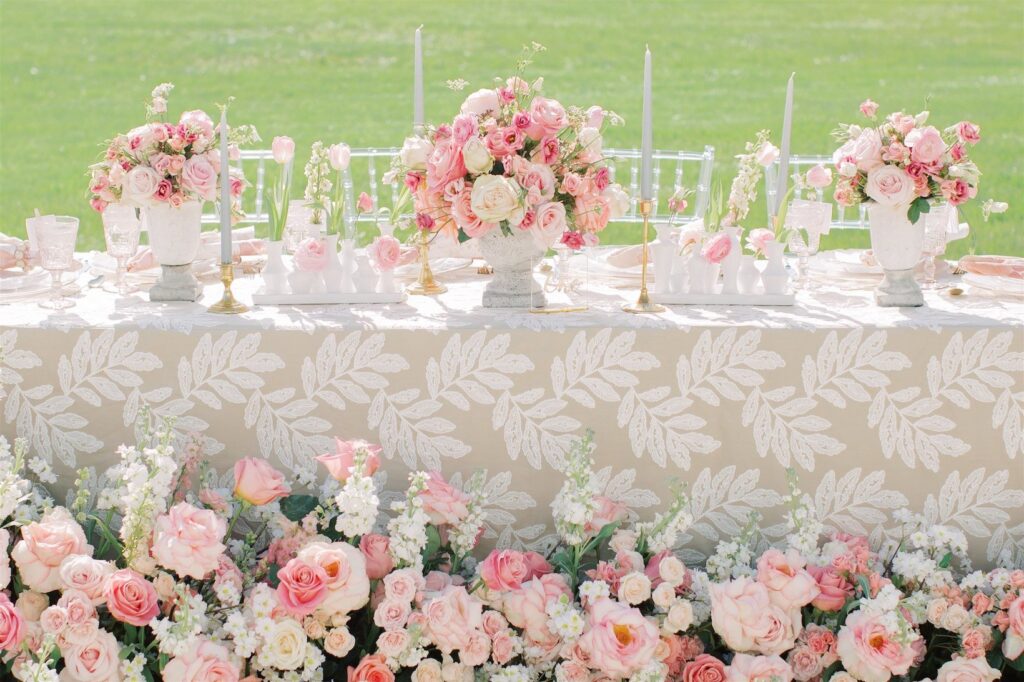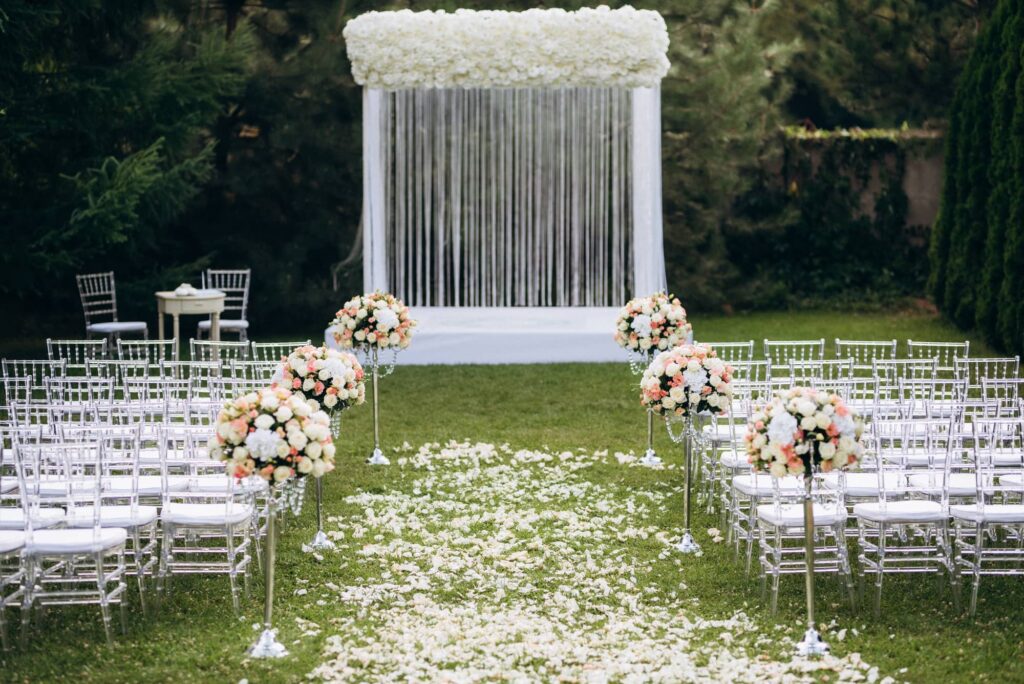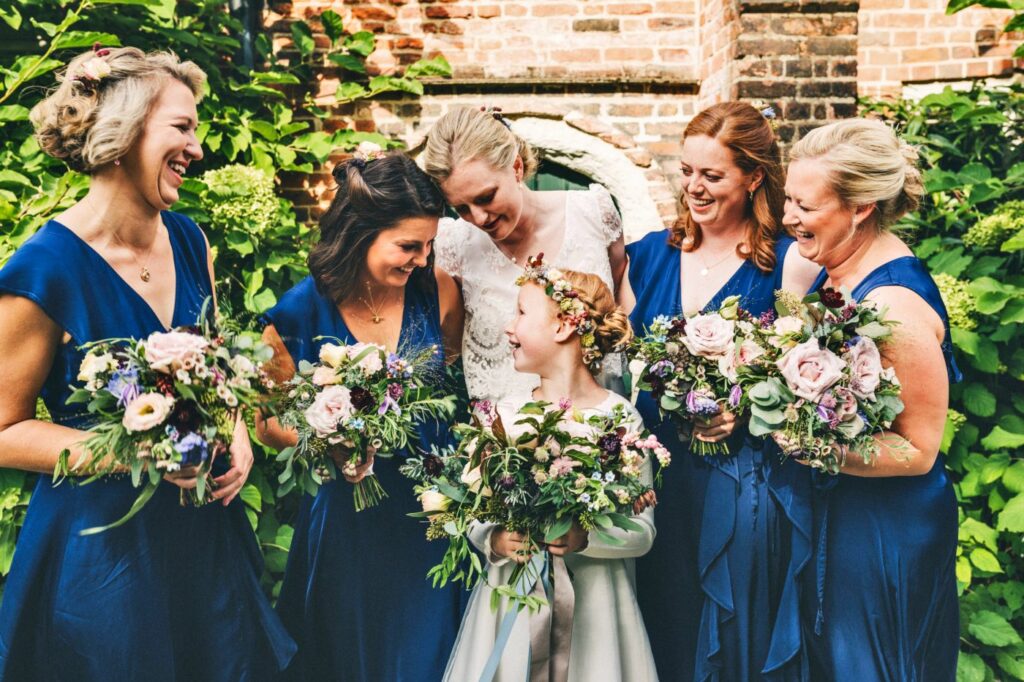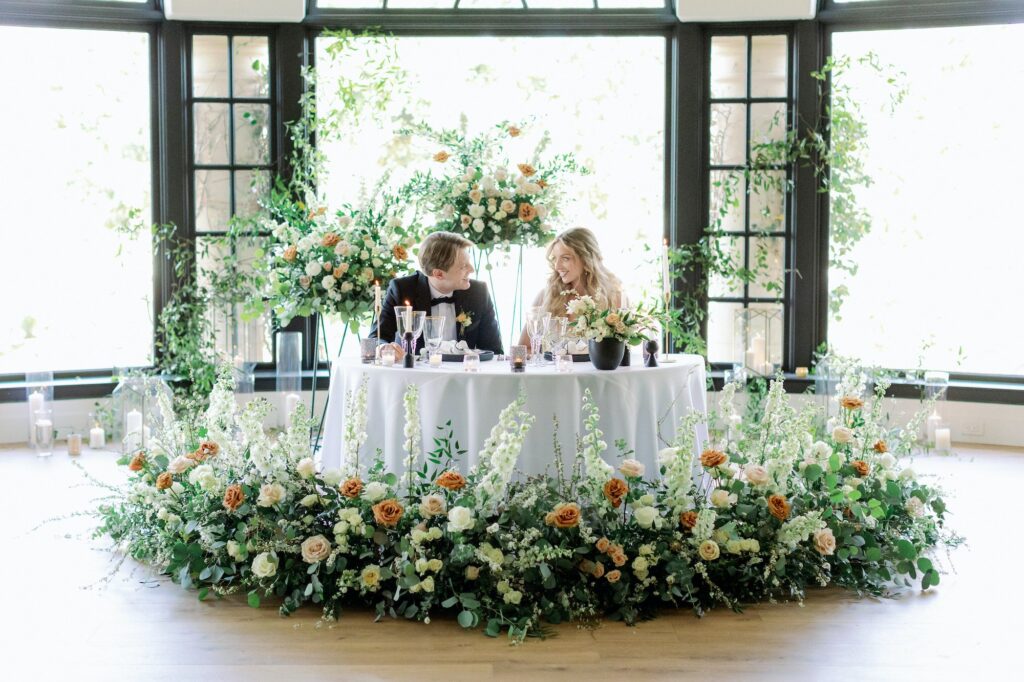Planning a wedding involves many decisions, and one important choice is the selection of flowers. From bouquets to centerpieces, floral arrangements play a significant role in creating the perfect ambiance for your special day. However, the cost of wedding flowers can quickly add up, so it’s crucial to budget carefully to avoid any surprises. In this article, we will guide you through the process of understanding and managing wedding flower expenses.
Understanding Wedding Flower Costs
When it comes to wedding flowers cost, it’s essential to have realistic expectations. The average expenditure on wedding flowers in the United States is around $2,000 to $3,000. However, this figure can vary significantly depending on various factors.
Planning a wedding involves many decisions, and one of the most important ones is choosing the right flowers. Flowers play a vital role in creating a beautiful and romantic atmosphere on your special day. They can transform a venue into a magical space and add a touch of elegance to your wedding decor. However, it’s crucial to understand the costs associated with wedding flowers to ensure they fit within your budget.

Average Cost of Wedding Flowers
The average cost of wedding flowers is influenced by several factors, including the size of your wedding, the types of flowers you choose, and the design complexity of your arrangements. On average, expect to spend approximately 8-10% of your total wedding budget on flowers.
It’s important to note that this percentage is just an average, and your actual costs may differ. If you have a larger wedding with a higher guest count, you may need more flowers to create the desired impact. Additionally, if you opt for rare or exotic blooms, the price may increase. The complexity of the floral arrangements, such as cascading bouquets or elaborate centerpieces, can also contribute to higher costs.
When determining your flower budget, consider the overall aesthetic you want to achieve and how important flowers are to you. If they are a top priority, you may be willing to allocate a larger portion of your budget to ensure you get the desired floral arrangements. Click here to explore the role of flowers in global wedding traditions.
Factors Influencing the Price of Wedding Flowers
Several factors can influence the price of wedding flowers. The time of year and the availability of certain blooms can impact costs. For example, if you have your heart set on a specific flower that is out of season, it may be more expensive to source or may not be available at all. Working with a knowledgeable florist who can suggest alternative options can help you achieve a similar look while staying within your budget.
Another factor to consider is the size and intricacy of the arrangements. Larger bouquets and elaborate centerpieces require more flowers and more time to create, which can increase the overall cost. Similarly, if you have a specific theme or design concept that requires specialized techniques or unique flower varieties, the price may be higher.
The experience and reputation of the florist can also contribute to the price. Established florists with a solid reputation may charge higher fees due to their expertise and the quality of their work. It’s essential to research and meet with multiple florists to compare prices and ensure you find one who understands your vision and can work within your budget.
Additionally, other factors such as delivery and setup fees, rental costs for vases or containers, and any additional services, such as floral installations or flower walls, can also impact the overall price of wedding flowers.
Understanding these factors and having open and honest communication with your florist can help you create a beautiful floral design that fits within your budget. Remember, it’s not just about the price tag but also the value and impact that flowers can bring to your wedding day.
Setting a Floral Budget for Your Wedding
Now that you have a better understanding of wedding flower cost, it’s time to set a budget that works for you. Start by determining your floral needs and preferences.
When it comes to planning your dream wedding, every detail matters. From the dress to the venue, you want everything to be perfect. And one of the key elements that can truly transform your wedding day is the flowers. They have the power to add beauty, elegance, and a touch of romance to your special day. But with so many options and costs to consider, setting a floral budget is essential. Learn more how to plan the wedding of your dreams.

Determining Your Wedding Flower Needs
Consider which floral arrangements are essential for your wedding. This may include bouquets, boutonnieres, corsages, ceremony décor, and reception centerpieces. Understanding your preferences will help you allocate your budget accordingly.
Imagine walking down the aisle, holding a stunning bouquet that perfectly complements your wedding gown. The fragrance of fresh flowers fills the air as you exchange vows with your partner. It’s a moment you’ll cherish forever. But before you can experience this magical scene, you need to determine your wedding flower needs.
Take some time to envision your ideal wedding. Think about the colors, themes, and overall atmosphere you want to create. Are you going for a classic, romantic look with soft pastel hues? Or perhaps you prefer a bold and vibrant color palette that reflects your vibrant personality. Once you have a clear vision in mind, you can start narrowing down your floral needs.
Allocating Funds for Different Floral Arrangements
Next, divide your budget among the various floral elements. For example, you may decide to allocate a larger portion of your budget to the bridal bouquet and reception centerpieces and a smaller portion to boutonnieres and corsages.
As you plan your wedding, it’s important to be mindful of your budget. Allocating funds for different floral arrangements is a crucial step in ensuring that you stay within your financial limits while still achieving the desired look and feel for your special day.
Consider the significance of each floral element in your wedding. The bridal bouquet is often the focal point, so it makes sense to allocate a larger portion of your budget to create a stunning arrangement that truly reflects your style and personality. The reception centerpieces, on the other hand, play a key role in setting the ambiance for your guests, so it’s worth investing in beautiful arrangements that will leave a lasting impression.
While boutonnieres and corsages may be smaller in size, they still contribute to the overall aesthetic of your wedding. Consider allocating a smaller portion of your budget to these floral elements, ensuring that they complement the rest of your arrangements without breaking the bank.
By carefully allocating your budget for different floral arrangements, you can strike a balance between creating a breathtaking floral display and staying within your means. Remember, it’s not just about the quantity of flowers, but also the quality and artistry that goes into each arrangement.
Ways to Save on Wedding Flowers
Planning a wedding can be an expensive endeavor, and one area where costs can quickly add up is the floral arrangements. However, with a little creativity and careful planning, you can find ways to save money on wedding flowers without compromising on beauty. Consider these tips to cut down on your floral expenses:
Seasonal Flowers: A Cost-Effective Choice
One of the easiest ways to save on wedding flowers is to choose blooms that are in season. Seasonal flowers are more readily available, meaning they require less effort and expenditure to obtain. Discuss options with your florist, and they can suggest cost-effective alternatives that fit your chosen season. Not only will this save you money, but it will also ensure that your arrangements have a fresh and vibrant look.
When selecting seasonal flowers, take into account the color palette of your wedding. Different seasons offer a variety of beautiful blooms, from vibrant summer dahlias to delicate spring tulips. By embracing the natural beauty of each season, you can create stunning floral arrangements that complement the overall aesthetic of your wedding.
Repurposing Flowers for Different Wedding Events
Another way to maximize your floral budget is by repurposing flowers throughout the day. For example, the bridesmaid bouquets can double as centerpieces or altar decorations. This way, you not only maximize their impact but also minimize the number of arrangements needed.
Consider creating a cohesive theme by using similar flowers and colors throughout the various wedding events. For instance, if you have a morning ceremony followed by an evening reception, repurpose the ceremony flowers as part of the reception decor. This seamless transition will not only save you money but also create a sense of harmony and continuity throughout the day.
Additionally, think beyond traditional floral arrangements and explore alternative options. Incorporate potted plants or succulents into your decor, which can be repurposed as gifts or home decorations after the wedding. By choosing versatile elements, you can extend the lifespan and value of your floral investments.
Remember to communicate your vision and budget to your florist. They are experts in their field and can offer valuable suggestions on how to repurpose flowers and make the most of your budget. By working together, you can create stunning floral arrangements that leave a lasting impression without breaking the bank.

Working with a Florist: Tips and Tricks
Collaborating with a professional wedding florist can streamline the process and ensure your vision comes to life. Here are some tips for working effectively with a florist.
Questions to Ask Your Wedding Florist
Before making your final decision, ask potential florists questions about their experience, portfolio, and pricing. Be sure to inquire about any additional fees, such as delivery charges or setup costs.
Negotiating Prices with Your Florist
If you have a strict budget, it’s worth discussing your financial limitations with your chosen florist. Sometimes, they can suggest alternative options or work within your budget by making adjustments to the designs or substituting certain blooms.
DIY Wedding Flowers: An Affordable Alternative
If you’re feeling creative or have a limited budget, consider arranging your own wedding flowers. However, it’s essential to weigh the pros and cons before embarking on a DIY floral adventure.
Pros and Cons of DIY Wedding Flowers
Creating your own floral arrangements can save money and allow for a more personal touch. On the other hand, it requires time, effort, and skills. Consider whether you have the necessary talents or if you can rely on friends or family members with floral expertise.
Tips for Creating Your Own Wedding Flower Arrangements
If you decide to pursue the DIY route, plan ahead and practice your arrangements. Research floral techniques, invest in quality tools, and choose hardy flowers that can withstand transportation and the duration of the event.
By understanding wedding flower costs, setting a budget, exploring cost-saving options, and working with a florist or trying your hand at DIY, you can navigate the floral expenses of your wedding with confidence. Remember, it’s possible to have stunning wedding flowers without breaking the bank!
